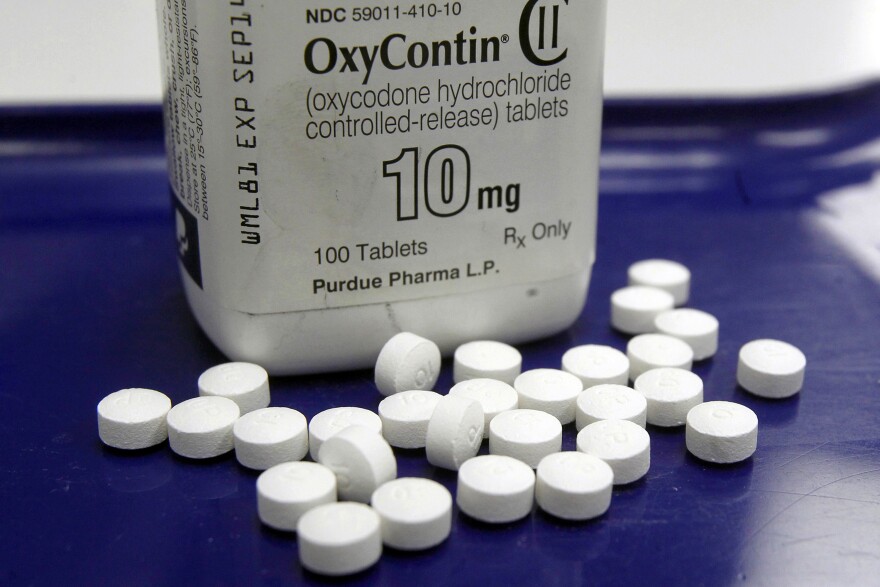The General Assembly passed a bill that would create a fund to hold settlement dollars from lawsuits related to pharmaceutical companies’ role in the opioid epidemic, in a nod to public health experts’ advice that the dedicated fund could avoid the pitfalls of the 1990’s tobacco litigation.
The 11 members of the Opioid Abatement Authority’s board would be required to be drawn from medical professionals, law enforcement, the addiction and recovery community, and legislative staff. The fund the authority oversees would allocate 15% of the funds to localities, 15% to state agencies, and 35% to regional efforts. The remaining 35% would be unrestricted.
The bill, introduced by Majority Leader Charniele Herring, was drafted with the help of the Attorney General’s office.
Virginia has already won $13 million from the controversial consultants McKinsey. Other lawsuits remain pending, but could be substantial. In other states settlements have been in the billions of dollars.
“Additional multistate investigations and legal actions remain ongoing. While we don’t have specific dollar amounts, should Attorney General Herring be successful in these matters, the majority of the money that the Commonwealth does receive would go into this opioid abatement authority,” Charlotte Gomer of the Attorney General’s office wrote in an email
Public health officials had been warning that settlement dollars going into a general fund could easily go to places other than addressing the opioid epidemic.
“States get into trouble with recessions and money gets tight or priorities change. And so the money often will not go - even under the best of intentions - to where people initially wanted it to go,” said Dr Georges Benjamin of the American Public Health Association.
In 1998, 46 states and the District of Columbia settled with major tobacco companies on an agreement that would have the companies pay out $206 billion over 25 years. The money was supposed to help recoup the public cost of smoking. But the American Lung Association gave Virginia failing grades across the board for tobacco control. Benjamin said that in states across the country special interests were able to propose different uses for the money.
“When you get a big bowl with some money, every lobbyist in town, and every person with an idea comes in course and makes their case... some of those are not evidence-based.”
In Virginia, where tobacco is grown, there was an argument to help develop areas where the plant was produced. But the Office of the State Inspector General said in 2019 that the Tobacco Region Revitalization Commission didn’t adequately oversee grants. In 2011, The Joint Legislative Audit and Review Commission, said in a study that the commissions’ partner group, the Tobacco Indemnification and Community Revitalization Commission, hadn’t done enough to revitalize the region.
Overdoses in Virginia were on the rise in the years before the pandemic, but there were structural changes that got many more people help, especially under Medicaid expansion. 12,000 people with substance use disorders enrolled, and became newly insured within three months of the program’s start. There was also a large increase in the number of providers that were prescribing medication for opioid use disorders - 73% - between 2016 and 2018. Preferred Office-Based Opioid Treatment program sites, which deliver addiction treatment services to patients with moderate to severe opioid use disorders, nearly tripled between 2017 and 2019.
Those existing programs are the best homes for the abatement fund’s resources, experts say.
“Money that's put aside into an opioid abatement fund, shouldn't be used in replacement of existing funding,” says Sarah Whaley, the program coordinator of the Bloomberg opioid initiative at the Johns Hopkins Bloomberg school of public health. “It should be used to supplement what states are already doing.”
The amount of work ahead for the state - and the new fund - is substantial, especially when considering the damage done by the opioid epidemic. And while Medicaid and other healthcare approaches are an essential part of the solution, social programs have an important role to play as well.
“It is important that there is a continuation from the intervention that we are giving them and the help into the community through case management, through different programs,” says Dr Nassima Ait-Daoud Tiouririne, a psychiatrist and addiction specialist with the University of Virginia. “Help with housing, employment, transportation.”
This school of thought is already present in community service boards, which are local public health authorities.
“We have case managers that work in the office as well as in the community and their role is really to help assess our client's holistic needs,” says Jennifer Smith Ramey, the outpatient program manager for a community service board in Lynchburg. “In other words they're assessing if the client may need medical, assistance, a dental appointment, stable housing, [or] food. And they will help link to appropriate community resources to get those needs met.”
Whether the Opioid Abatement Fund provides a strong approach to tackle the lasting damage probably depends on how much the state is able to win from drug producers and their consultants. Underfunding and a broad approach matter to the healthcare providers, too.
“I was working with one of my trainees this weekend and he was experiencing burnout and he said, it's the same people that keep coming back. We do the same thing. They keep coming back. It is not working. And he is right. It is not working.”
This report, provided by Virginia Public Radio, was made possible with support from the Virginia Education Association.


